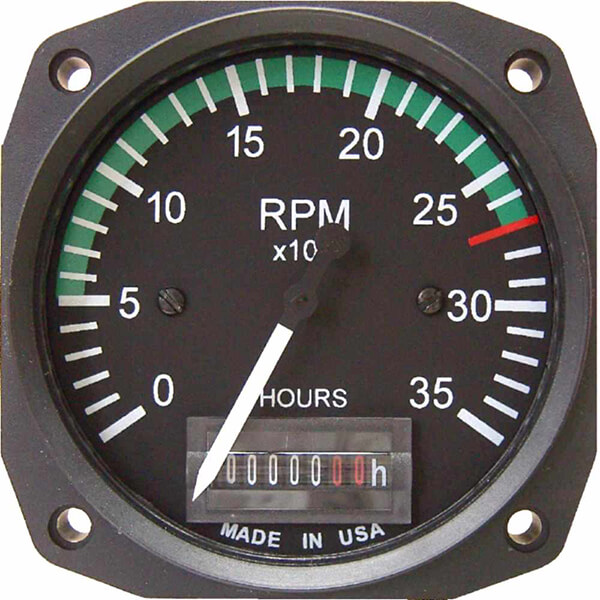Comprehensive Overview to Recognizing and Utilizing a Tachometer Properly
Wiki Article
Checking Out the Functions and Advantages of a Tachometer: A Comprehensive Guide for Vehicle Enthusiasts
From supplying real-time data on engine rate to assisting in optimizing gear shifts, the tachometer offers as more than simply a dial on the control panel. Its complex features not just boost driving experience however also play an essential role in maintaining engine wellness and performance.Understanding the Basics of a Tachometer
In the world of automobile instrumentation, understanding the fundamentals of a tachometer is necessary for any cars and truck enthusiast looking to dig into the ins and outs of engine performance tracking. A tachometer, typically shown on the dashboard of a vehicle, determines the engine's revolutions per min (RPM) This vital instrument gives real-time data on how quickly the engine crankshaft is revolving. By keeping an eye on the RPM, motorists can guarantee they are operating within the optimum variety to optimize efficiency and efficiency.Tachometers normally have actually a range marked in revolutions per minute, with a redline indicating the maximum speed at which the engine can safely run (tachometer). This info is important for protecting against engine damages and maximizing gear moving for manual transmissions. In addition, tachometers can assist in diagnosing engine concerns such as misfires or a failing ignition system by spotting irregular RPM readings
Importance of Monitoring Engine Speed

Keeping an eye on engine speed is a vital element of car maintenance and performance optimization for vehicle lovers and experts alike. The engine speed, determined in revolutions per min (RPM), suggests just how quickly the engine's crankshaft is turning. By maintaining a close eye on the RPM, motorists can ensure that the engine is running within the optimal array, protecting against possible damages from over-revving or delaying. Keeping track of engine speed is particularly critical throughout equipment shifts, as it helps motorists determine the ideal time to alter equipments for smooth velocity and efficient fuel consumption.
Additionally, tracking engine speed can likewise offer important understandings into the total health of the automobile. Uncommon fluctuations in RPM might show problems such as a clogged up air filter, fuel system issues, and even engine misfires. By finding these abnormalities early with the tachometer analyses, vehicle drivers can resolve potential issues without delay, protecting against extra extreme damages and pricey repair work down the line. On the whole, keeping track of engine speed with a tachometer is a basic technique that can improve driving performance, lengthen engine life, and ensure a much safer and more delightful driving experience.
Enhancing Performance Via Gear Shifts
Enhancing performance with tactical gear changes is an essential element of maximizing a vehicle's efficiency and power result. Proper equipment shifting guarantees that the engine runs within its optimum power band, enabling for smooth velocity and improved fuel here economic climate. When shifting equipments, it is critical to take note of the engine speed suggested on the tachometer. By monitoring the engine changes per minute (RPM), vehicle drivers can identify the most favorable minutes to upshift or downshift great site for optimum efficiency.
To accomplish peak efficiency through equipment changes, motorists should exercise smooth and timely changes in between equipments, matching engine rate with road rate to harness the complete capacity of their vehicle's powertrain.
Taking Full Advantage Of Performance With a Tachometer
Understanding the art of gear shifting in high-performance automobiles not only boosts driving experience yet also plays a vital duty in making best use of performance with a tachometer. tachometer. By paying very close attention to the tachometer analyses, chauffeurs can optimize their equipment shifts to operate within the engine's most reliable range. When accelerating, moving equipments at the right RPM indicated by the tachometer can prevent the engine from overworking or underperforming, bring about enhanced fuel performance and overall performanceIn addition, a tachometer assists vehicle drivers stay clear of unnecessary revving, which not only throws away gas but likewise puts unneeded stress on the engine. Constantly monitoring the tachometer while driving enables smoother gear changes, lowering wear and tear on the transmission system with time.

Advanced Tips for Tachometer Application
Enhancing driving accuracy with proficient tachometer analysis is key to enhancing car performance. To look into innovative ideas for tachometer utilization, consider integrating making use of change lights. Change lights are aesthetic indicators that light up when it's time to move gears based upon engine revolutions per min (RPM), enabling seamless gear adjustments without frequently keeping an eye on the tachometer. Furthermore, practicing heel-and-toe downshifting strategy can be advantageous when aiming for smoother transitions in between gears. This method entails making use of both the brake and accelerator pedals concurrently while downshifting, assisting to preserve engine RPM and avoid jerky movements. Utilizing an efficiency tachometer with personalized settings can offer real-time information tailored to specific driving choices or automobile adjustments. By fine-tuning change factors and setting warning thresholds, chauffeurs can enhance velocity and engine efficiency while minimizing the risk of over-revving. These innovative strategies, when coupled with a deep understanding of tachometer analyses, can boost driving effectiveness and general driving experience.Conclusion
Finally, the tachometer functions as an essential device for cars and truck lovers to check engine rate, boost efficiency through gear shifts, and take full advantage of efficiency. By comprehending the functions and benefits of a tachometer, drivers can optimize their driving experience and extend the life expectancy of their car. Utilizing advanced suggestions for tachometer use can better improve driving abilities and overall efficiency on the road.Report this wiki page